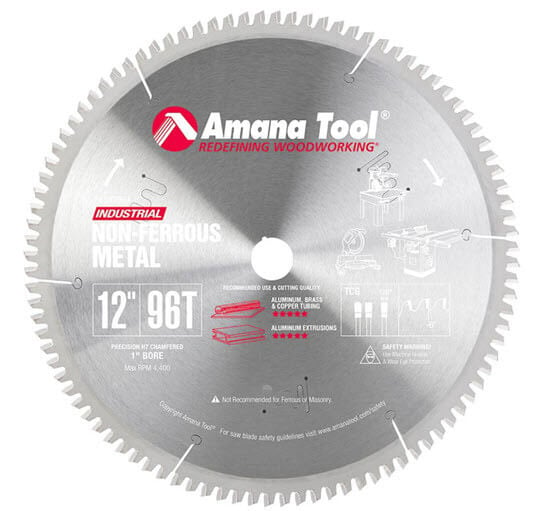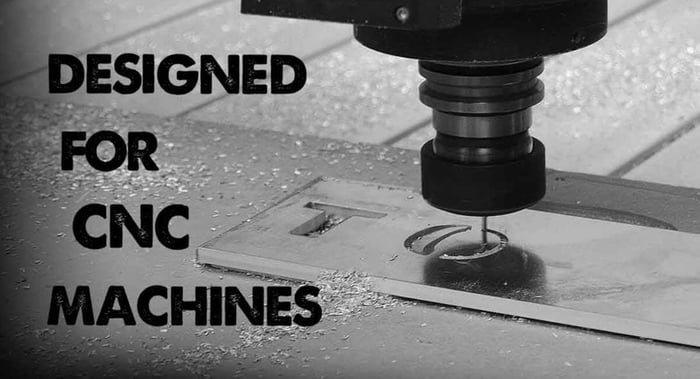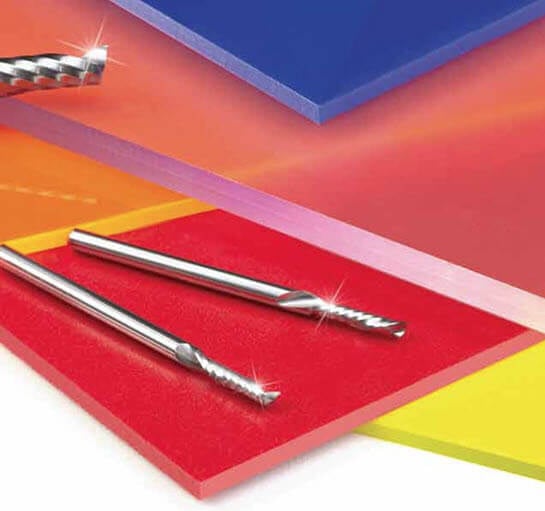
Best Aluminum Cutting Saw Blades
What You Need to Know About Cutting Aluminum
Aluminum is a unique metal and it requires specialized aluminum cutting saw blades.
It's not a compound, it's actually an element in its own right -- #13 on the periodic table -- but it's never found in nature in its pure form beause it so easily binds with other elements, creating compounds from feldspar to sapphire.
It is one of the lightest metals in the world (iron is 3 times heavier!) but it is strong, flexible, and very corrosion-resistant.
It's not magnetic; it's a great conductor (that's why they use it for pots & pans); and you can combine it with pratically every other metallic element.
And it's recyclable.
But it has its drawbacks, too. It is softer and more prone to gumming up than any other popular metal.
Aluminum Requires Faster Cutting Speeds than Steel
There are 3 reasons to use a faster cutting speed than when cutting steel.
- Softness: Because aluminum is softer and more pliable than steel, you can cut it at faster speeds than steel without compromising your blade.
- Conductivity: Because aluminum is so conductive, temperatures will build quickly and dissipate throughout your material - more so than with other metals. A faster cutting speed dissipates the heat generated by cutting, preventing localized overheating.
- Prevent Build-up: At higher cutting speeds, there's less chance of aluminum building up on the cutting edge of the tool (often called "gumming up" or "welding"). This results in a smoother and cleaner cut.
Aluminum Cutting Router Bits
You'll want special aluminum cutting router bits, too. We will address these in another article.

What Is An Aluminum Cutting Saw Blade?
How is it different from a regular saw blade?
Carbide Tipped: Carbide tips are much harder than regular steel and retain their edge longer, which is essential for cutting a softer, gummy metal like aluminum.
Negtive Hook Grind Tooth Geometry: Blades designed for cutting aluminum have a specific tooth design and grind that helps in ejecting the aluminum chips away from the cut. This reduces the risk of the blade gumming up and also helps to produce a cleaner cut.

Triple Chip Cutting: The teeth on a blade designed for cutting wood or steel can become quickly clogged with aluminum chips, leading to inefficient and potentially dangerous cutting operations.
Extended Blade Life: Using the correct blade for the material ensures that the blade will last longer. Aluminum will more quickly wear down the teeth of blades not designed for it. Blades designed for aluminum will typically produce a cleaner cut with fewer burrs and a smoother finish.
Coatings: Some blades have specific coatings to reduce friction and prevent the material from sticking to the blade. The reduced friction helps in providing a smoother cut and can also extend the blade's lifespan.

Whether you need a 10", 12", 14" or larger blade, ToolsToday has you covered.
People Also Ask:
Does Aluminum Rust?
No. That's one of the things that people like about it. Instead of rusting, when cut edges are exposed to moisture or oxygen, aluminum "oxidizes" into a white compound called aluminum oxide. Aluminum oxide actually seals the material and prevents further oxidization. But, it's not very pretty.
What is Aluminum Composite Material (ACM)?
ACM is a rigid sheet made of a polyethylene core, sandwiched between two sheets of pre-finished aluminum. It is light-weight, without sacrificing durability. ACM sheets are often used for outdoor signage.





